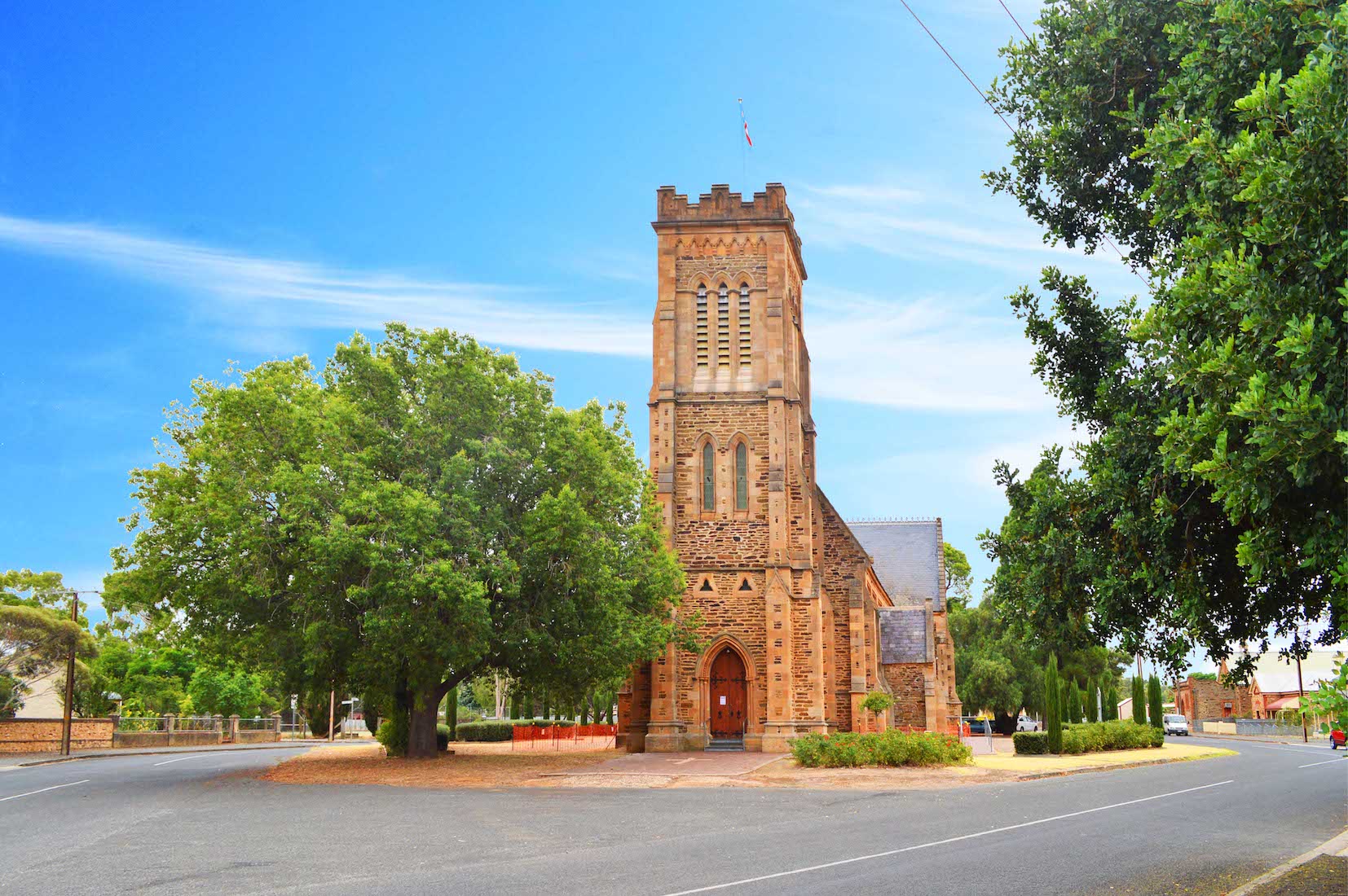The Church lies in an historic section of the town of Gawler called Church Hill. There are many old houses in this part of the town, but also the imposing structures of St George’s Anglican Church, The Catholic Church of Saints Peter and Paul, and the Zion Lutheran Church.
A brief history of this Church is given below. However, if you want to begin your tour of the Church immediately, tap / click on START . You can also access intermediate points in the tour by a tap / click on the following links:
NOTE ON MAGNIFYING IMAGES
With this website format the images are large enough for most purposes. If there is a need for greater magnification of an image, go to the identical photo on
https://www.flickr.com/photos/paulscottinfo/albums
and download the image as instructed.
HISTORY
Years Built: 1864 – 1887
Address: 26 Cowan Street, Gawler, SA 5118
Early Days
The first Church of England services in Gawler were conducted in 1839 in the little sitting room at the home of Mr. John Reid at Clonlea (on the north bank of the North Para River in line with Murray Street). At this time there were no houses in Gawler. The first Colonial Chaplain Rev. C. B. Howard occasionally rode his horse 25 miles from Adelaide’s Holy Trinity Church to minister where necessary. During 1845 the Rev. James Farrell, the Colonial Chaplain of Holy Trinity, Adelaide, chaired a meeting of the Members and Friends of the Church of England, and £100 was raised for the building of a Church at Gawler.
In 1846, the Rev. William Henry Coombs (formerly curate of St. Martin-in-the-Fields, London was sent out from England by The Society of the Propagation of the Gospel. Services were held in the basement of the Victoria Mill, (then under construction). This was the beginning of Rev. Coomb’s 50 years of service to the Anglican Church, Gawler (formerly Church of England).
The foundation stone of the first church to be built was laid in 1847 by His Excellency Governor Robe, on land known as Orleana Square (Church Hill) surveyed by Colonel Light. The Church was named after England’s patron saint (St George) and in honour of Colonel George Gawler. The Church cost £800 to be built. Five years after completion this building was severely damaged by a storm.
A day school was built in 1850 where the tennis courts now stand. Thirty-five scholars attended under the guidance of M. L. S. Burton. The building now known as the Parish Hall was constructed as a school in 1866. Additional rooms to the front and back were added in 1911 to accommodate the increased number of students. As recently as 1984 this building again became a school under the guidance of Rev. J. B. Kinsman and church members. Hence Trinity College was established. It is now situated south west of Gawler Township and with five schools and one Montessori school, is the largest school of its type in the Southern Hemisphere.
St George’s Church as it stands today
In 1858 the foundation stone was re-laid for the nave of the new building on the site where it stands today. The architect was Edward Angus Hamilton and the design is early 14th century Gothic. Materials used included blue stone and sandstone from local quarries and Welsh slate for the roof. The building was erected in stages – the nave in 1864, the transept 1884, and the chancel in 1887. The Church was consecrated on 23rd April 1894 by Bishop Kennion. In 1907 the first stone for the erection of the tower was laid by Archdeacon Young. The dedication took place on 28th April 1909.
An octave of hemispherical bells was placed in the tower in 1921 to commemorate those killed in the First World War. In 1950 the eastern end of the Church roof was re-slated with Spanish slate at a cost of £25,000. St George’s building has a National Trust ‘A’ listing.
Foundry Details ... . The Church possesses a chime of eight hemispherical bells provided by this company in 1921. Our sales day book entry dated 23rd June 1921 advises that the work was invoiced to Sir Edward Lucas, Agent General for South Australia, Australia House, Strand, London WC2. It is clear that Sir Edward Lucas acted as a purchasing agent for the church. Our sales day book entry mentions the set of eight hemispherical bells with the largest 2' 7" in diameter, weighing approximately 3½ cwt. The chime was provided complete with supporting spindles, distance pieces, framework and a chiming apparatus for the freight on board London price of £315.0s.0d. [Source Whitechapel Bell Foundry Limited, Alan Hughes.]
http://www.gawleranglicans.org/our-churches/church-of-st-george/



